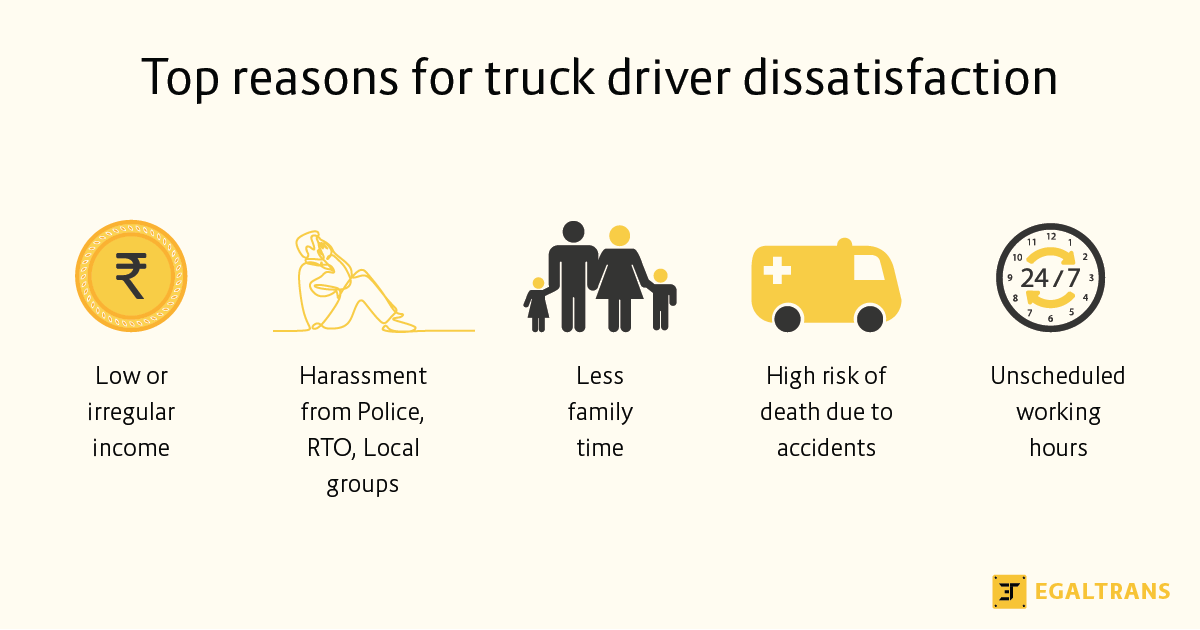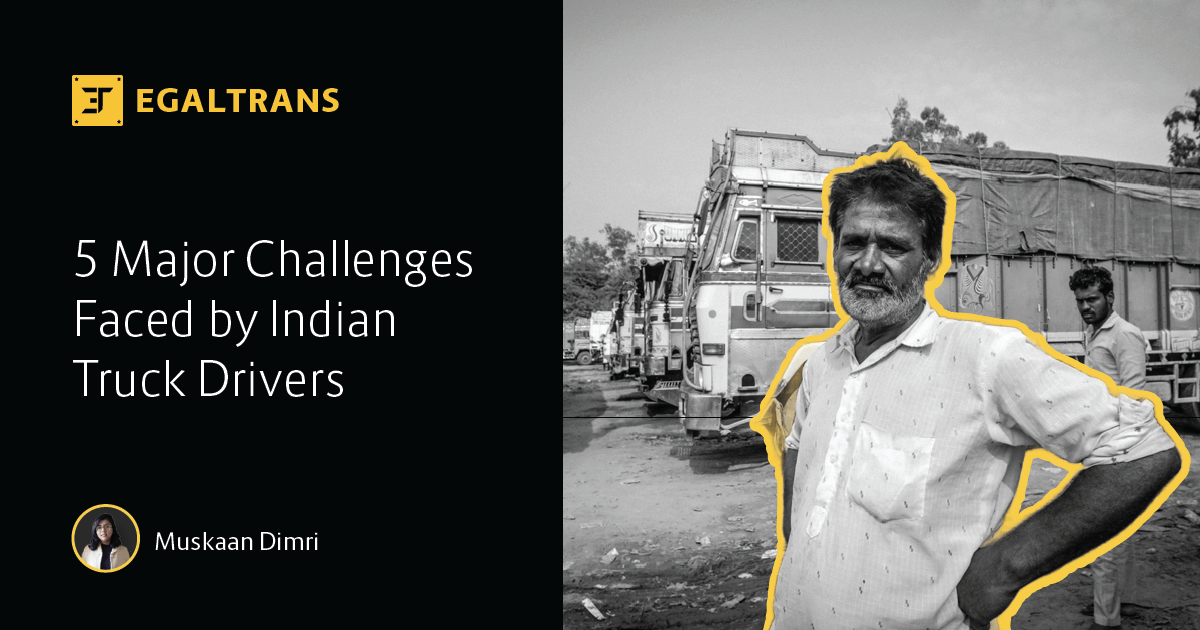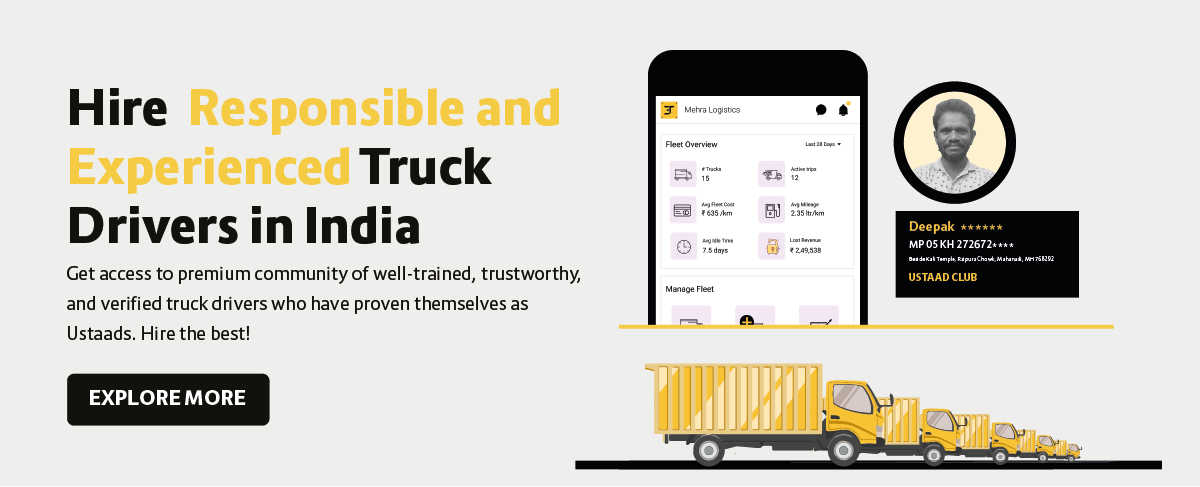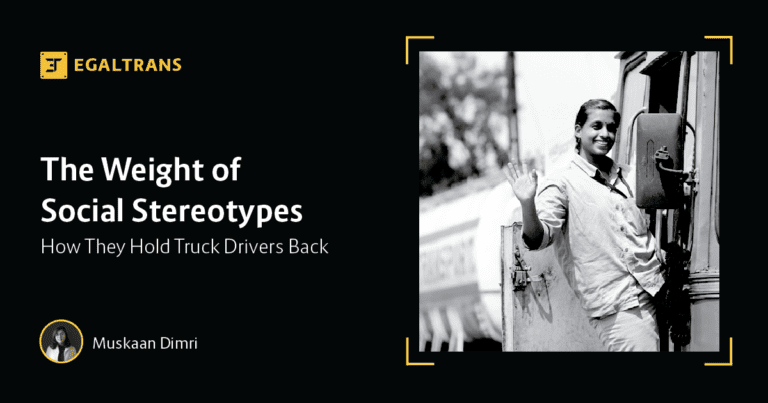In India, truck drivers play a vital role in the transportation sector, facilitating the movement of goods across the vast expanse of the country. According to the Ministry of Road Transport and Highways, there were over 80 lakh (8 million) registered goods vehicles in India as of 2020. The trucking industry is a significant source of employment, with millions of individuals engaged in professional driving. In the vast and dynamic landscape of Indian trucking, drivers grapple with numerous challenges that impact their daily operations.
The job of a truck driver in India is not without its challenges. The road infrastructure presents a major hurdle, with potholes, congestion, and uneven surfaces impacting travel efficiency. The All India Motor Transport Congress (AIMTC) estimates that the trucking industry faced a severe shortage of drivers, with around 20-25% of truck driver positions remaining vacant. From infrastructure hurdles to regulatory complexities, the journey for these road warriors is far from smooth.
In this article, we delve into five major challenges faced by Indian truck drivers, shedding light on the intricacies of their demanding profession.

Challenges Faced by Truck Drivers
1. Road Infrastructure Woes:
One of the primary challenges confronting Indian truck drivers is the state of road infrastructure. Pothole-ridden roads, inadequate signage, and the absence of rest areas pose significant obstacles. Navigating through diverse terrains becomes a Herculean task, leading to increased wear and tear on vehicles and heightened driver fatigue. Improved infrastructure planning and maintenance are crucial to ensuring safer and more efficient journeys for these drivers.
2. Regulatory Red Tape:
Navigating the bureaucratic maze of regulations is another significant hurdle for Indian truck drivers. From complex paperwork to varying state-specific rules, compliance becomes a cumbersome process. The lack of a unified regulatory framework adds layers of complexity, impacting not only operational efficiency but also the overall well-being of the drivers. Streamlining regulations and fostering inter-state cooperation are essential steps towards easing this burden.
3. Driver Health and Well-being:
Long hours on the road and sedentary lifestyles contribute to a range of health issues among truck drivers. Irregular meal timings, limited access to nutritious food, and inadequate rest can lead to physical and mental health challenges. Initiatives promoting driver health, including awareness campaigns, rest area facilities, and healthcare support, are imperative to enhance the well-being of these professionals who form the backbone of the logistics sector.

4. Technology Adoption Challenges:
In an era of rapid technological advancement, the trucking industry in India faces challenges in adopting and adapting to modern technologies. Limited access to real-time gps tracking systems, digital documentation, and training on new technologies hinder operational efficiency. Bridging this technological gap is essential to enhance the overall competitiveness of the sector and ensure a smoother experience for both drivers and stakeholders.
5. Security Concerns on the Road:
Security remains a constant concern for Indian truck drivers, especially during long journeys across diverse regions. Instances of theft, vandalism, and harassment pose serious threats to both cargo and personnel. Collaborative efforts involving law enforcement, technology integration for real-time monitoring, and driver education on safety measures are critical to addressing these security challenges.
Also Read: The Weight of Social Stereotypes: How They Hold Truck Drivers Back
How to Overcome these Challenges
The job of a truck driver is essential to the functioning of the logistics industry, ensuring the timely and efficient transport of goods. However, truck drivers often face significant challenges, ranging from inadequate road infrastructure to regulatory complexities. Overcoming these hurdles is crucial for not only enhancing the well-being of truck drivers but also for optimizing the logistics sector. Here, we explore two key strategies to mitigate the challenges faced by truck drivers and improve the overall efficiency of goods transportation.
1. Infrastructure Improvement:
One of the primary challenges for truck drivers is navigating through suboptimal road conditions. To address this, governments and relevant authorities must prioritize comprehensive infrastructure development. This involves not only repairing existing roads but also constructing well-maintained highways equipped with clear signage. Additionally, establishing dedicated rest areas with essential amenities can significantly reduce driver fatigue. Improved infrastructure not only enhances the efficiency of goods transportation but also ensures the safety and well-being of truck drivers.
2. Technology Integration and Training:
Embracing technology is a transformative approach to overcoming challenges in the trucking industry. Implementation of real-time tracking systems and digital documentation processes can streamline operations, reducing the paperwork burden on drivers. Providing training programs that familiarize drivers with modern technologies and equip them with the necessary skills for digital tools can enhance their adaptability. Telematics solutions that monitor driver behavior, vehicle health, and route optimization contribute to safer and more efficient journeys. Collaboration between the government, industry stakeholders, and technology providers is essential for the seamless integration of innovative solutions, ultimately improving working conditions for truck drivers.

3. Incentives by Fleet Managers:
Incentives offered by fleet managers play a pivotal role in positively impacting truck drivers’ job satisfaction and performance. Beyond financial rewards, non-monetary incentives, such as recognition programs or performance bonuses, can motivate drivers to excel in their roles. Providing incentives for safe driving practices, on-time deliveries, or fuel efficiency not only promotes a culture of excellence but also contributes to overall road safety and operational efficiency. Additionally, offering benefits like flexible schedules, improved rest facilities, or access to wellness programs demonstrates a commitment to the well-being of truck drivers, fostering a positive work environment. Ultimately, a well-structured incentive program not only acknowledges the hard work of truck drivers but also serves as a catalyst for enhanced job performance and driver retention within the fleet.
You may want to read: Worldwide Impacts the Global Truck Driver Shortage is Causing
As we navigate the challenges faced by Indian truck drivers, it becomes evident that a holistic approach is necessary. Improved infrastructure, streamlined regulations, prioritizing driver health, embracing technology, and addressing security concerns collectively contribute to creating an environment where truck drivers can thrive. By acknowledging and tackling these challenges head-on, stakeholders can pave the way for a more sustainable and efficient future for the Indian trucking industry.






